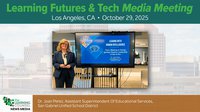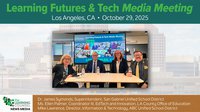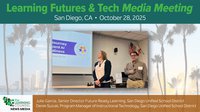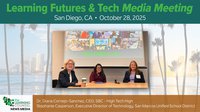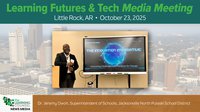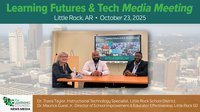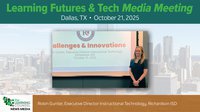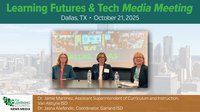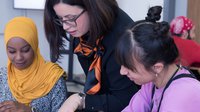California’s nearly $5 billion Expanded Learning Opportunity Program (ELOP) initiative was created to focus on “supporting students beyond the normal school hours to develop their academic, social, emotional, and physical needs and interests.” The program provides families with no-cost or low-cost access to before school, after school, summer, and intersession programs that include everything from sports to robotics, performing arts to wellness activities. Research shows high quality out-of-school time programs have positive impacts on student outcomes that include improved attendance, school day behavior, and academic performance.
If California districts and Expanded Learning providers continue to deepen their partnership to provide opportunities and experiences for students and communities of all socio-economic backgrounds, this movement can and should become a blueprint for the entire country. In the same way that Head Start became a national program to support children's growth from birth to age 5 through services centered on early learning and development, health, and family well-being, ELOP could and should become available in every state.
Michael Funk, director of California’s Department of Education Expanded Learning Division, defines Expanded Learning as “before school, after school, summer, or intersession learning programs that focus on developing the academic, social, emotional, and physical needs and interests of pupils through hands-on, engaging learning experiences. It is the intent of the Legislature that expanded learning programs are pupil-centered, results-driven, include community partners, and complement, but do not replicate, learning activities in the regular schoolday and school year.”
As a community partner, my company has been working with after school and out-of-school coordinators and directors for nearly two decades. As ELO programs spread across the state, I have also had the privilege and pleasure of working with new ELOP district administrators who have varying degrees of experience in this field, but are all passionate about supporting students beyond the traditional classroom setting. In my experience, ELOP district administrators seem to have a wide range of educational backgrounds and experience. I know former principals, former visual and performing arts (VAPA) coordinators, former athletic directors and special education coordinators who, depending on the size of their districts, may be a one-person team or may be managing a team with multiple administrators and multi-million dollar budgets, multiple vendors and community partners.
We are fortunate to partner with nearly 80 districts from across the state. We also partner with Capitol Advisors Group to understand funding regulations and fluctuations, with the California Afterschool Alliance (CA3) for advocacy and policy making, with BOOST for afterschool practitioners networking and with the California Afterschool Network (CAN).
Built on common identity, reflection, and collective intelligence, Communities of Practice (CoP) are systems formed by people learning together in a shared space. This first Expanded Learning Community of Practice brought together ELO administrators from 15 districts and thought leaders from across the state to discuss challenges and share best practices on topics such as ELO-P advocacy and funding, UDL-based curriculum, Continuous Quality Improvement, and parent and community engagement. While communities of practice are common in the education field, this was a chance to focus specifically on those leading expanded learning programs.
Working alongside my own team of industry experts, I designed the day to ensure that all district administrators—whether they managed 4 or 40 schools and had been leading ELO-P from its inception or were brand new to their roles—were able to learn and contribute to the advancement of this movement.
In response to a survey, ELO leaders who attended the event emphasized the importance of being able to connect with others doing the work to share best practices with each other. “The best thing is networking and collaborating with friends and seeing everybody," said Rob Lurkins, ELO Administrator for Murrieta Unified School District. Learning what they’re doing and what we’re doing and being able to see what we can do [that is] best for kids.”
“I’ve already written down several ideas that I’m going to take back to my district,” added Stephanie Ceminsky, Director of Expanded Learning at Westminster School District.
In closed-door discussions among ELO-P policy makers, school districts and community partners, it has sometimes been said that the biggest risk to the success of the program is “compliance culture.” Public education can be bureaucratic and sometimes over-index on standardization. Even with the best of intentions and design, a program can become an exercise in compliance. In order to prevent this from happening to California’s Expanded Learning Program, we all need to play our part in thinking bigger and thinking together to ensure that this unprecedented opportunity fulfills its promise to transform not only students, but their entire communities. The more we share best practices and successes, the faster we can learn together and turn ideas into action.
About the author
Chris Murphy is the CEO and co-founder of Elevo, which currently supports more than 350,000 students at 700 schools around California. He can be reached at chris@elevolearning.com.



